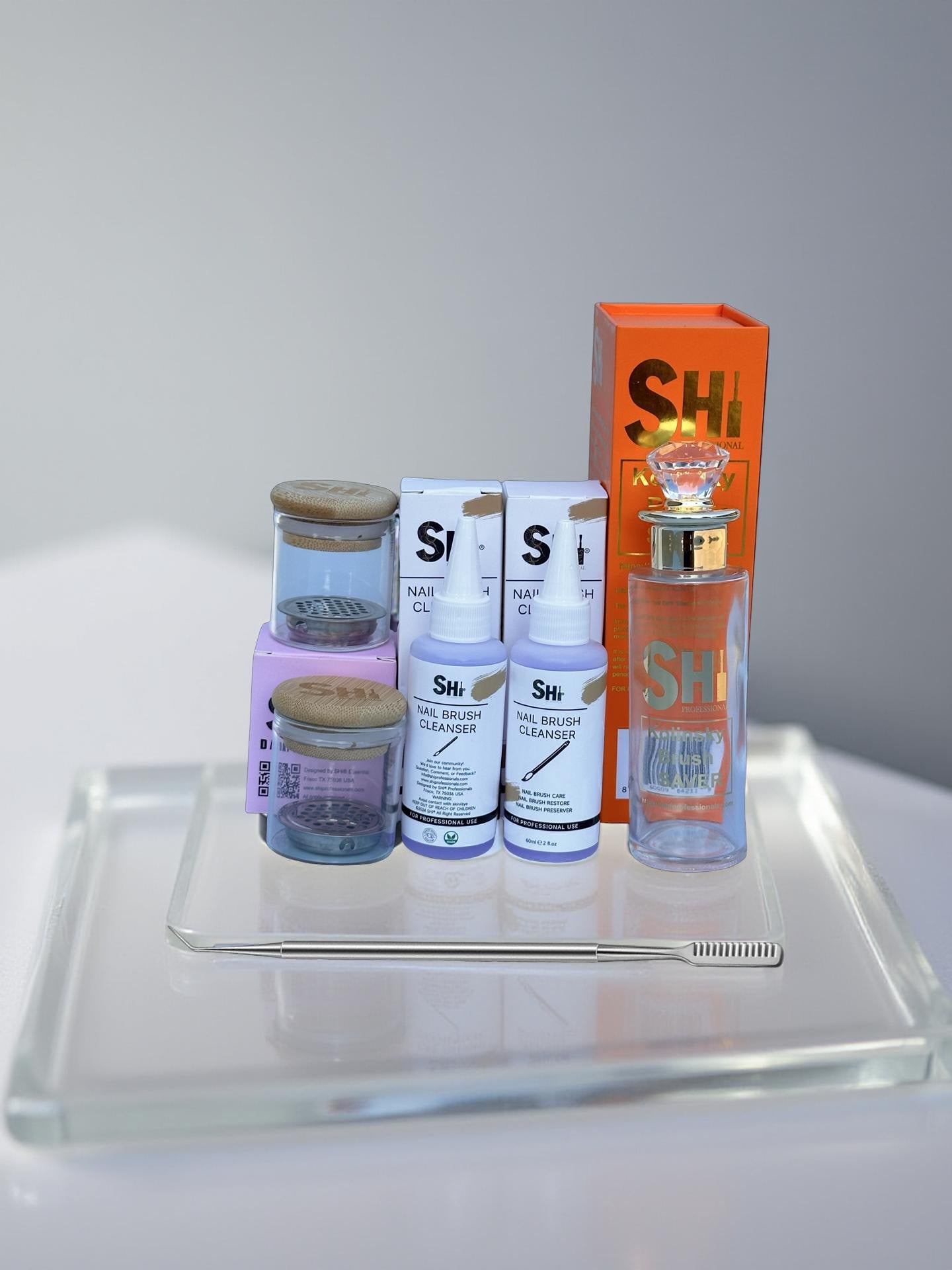What is the Difference Between Acid-Free and Acid-Based Nail Primer?
Proper nail preparation is one of the key steps to ensuring long-lasting, high-quality nail enhancements. Among the essential elements in this process is the use of nail primer, which helps eliminate service breakdown by improving adhesion between the natural nail and the product (acrylic, gel, etc.). However, the improper use of primers, especially acid-based ones, can lead to nail problems, including damage to the natural nail plate or even skin irritation.
In this blog, we'll explore the key differences between acid-free and acid-based nail primers, how they work, and when to use each.
Nail primers serve as a crucial bonding agent between the natural nail and the enhancement products. By improving adhesion, they prevent lifting, which is one of the most common complaints nail techs hear from clients. However, not all primers are created equal. In the nail industry, you will typically encounter two types:
- Acid-Free Primers
- Acid-Based Primers
Let’s break down how each of these works and how to choose the right one for your application.
What Is an Acid-Free Primer?
Acid-free primers are generally considered to be gentler on the nail plate. They are formulated without methacrylic acid, which is often found in traditional acid-based primers. Acid-free primers act like double-sided sticky tape: they bond to both the natural nail and the enhancement product (acrylic or gel) without etching or damaging the nail surface.
Key Characteristics of Acid-Free Primers:
- Gentler on Nails: They don’t cause as much dehydration or damage as acid-based primers.
- Double-Sided Bond: They form a chemical bond with both the nail plate and the enhancement product.
- Temporary pH Change: Acid-free primers slightly alter the pH of the nail to make it closer to that of the enhancement product, promoting better adhesion.
- Sticky Finish: They often leave a slightly sticky surface after drying to facilitate a stronger bond.
Best For:
- Clients with sensitive or normal nail plates.
- Clients who have concerns about damage or excessive dehydration.
- Use with modern monomers or base gels that may already contain primer-like bonding agents.
Pro Tip: If your liquid and powder (L&P) application takes more than 20 minutes, prime one hand at a time to ensure optimal adhesion since the pH change effect lasts for about 20 minutes.
What Is an Acid-Based Primer?
Acid-based primers, typically containing methacrylic acid, are a bit more aggressive in how they prepare the nail for product adhesion. These primers work by removing oils from the nail surface and creating microscopic etches or holes in the nail plate. This “etching” helps the product interlock with the nail for stronger adhesion.
Key Characteristics of Acid-Based Primers:
- Removes Oils: Helps dehydrate the nail surface and eliminate residual oils.
- Chalky White Finish: Once applied, it dries to a chalky white finish, signaling that it's ready for product application.
- Deeper Bond: The etching effect allows the product to “weave” into the nail plate, creating a strong bond.
- Potential for Damage: Overuse or improper application can lead to thinning of the nail plate or skin irritation if the product touches the skin.
Best For:
- Clients with very oily nail beds or those prone to lifting.
- Situations where maximum adhesion is needed due to problematic nails.
Pro Tip: Always apply acid-based primers sparingly, and avoid contact with the skin to prevent burns or irritation.
Which Primer Should You Use?
The decision on which primer to use depends on the client's nail type, the product you're working with, and the desired results. Here are a few considerations:
-
For Clients with Oily Nail Plates: If your client has oily nails and experiences frequent lifting, acid-based primers may be the better option. These primers help remove excess oils that can interfere with adhesion.
-
For Clients with Sensitive or Damaged Nails: Use an acid-free primer to avoid the risk of thinning the nail plate or causing irritation. Acid-free primers are also ideal for clients with normal nails who want a gentler option.
-
For Routine Applications: Many modern monomers and base gels already contain bonding agents similar to primer, so less primer may be required overall. In these cases, an acid-free primer might suffice to promote strong adhesion without over-drying the nail.
-







Leave a comment